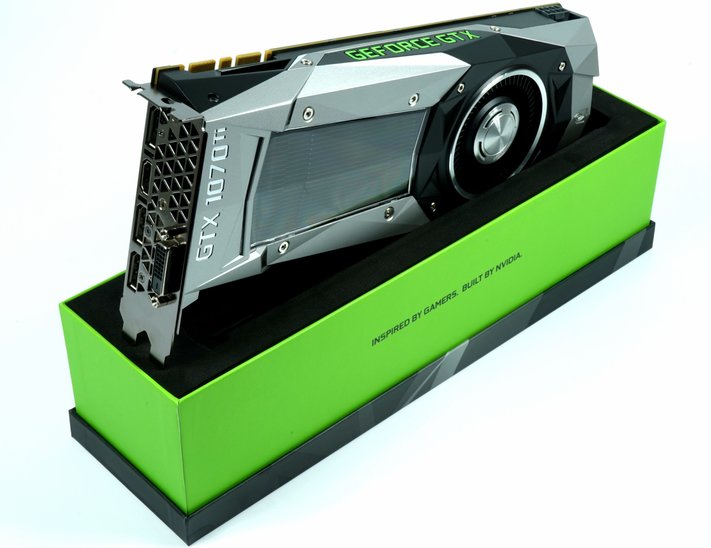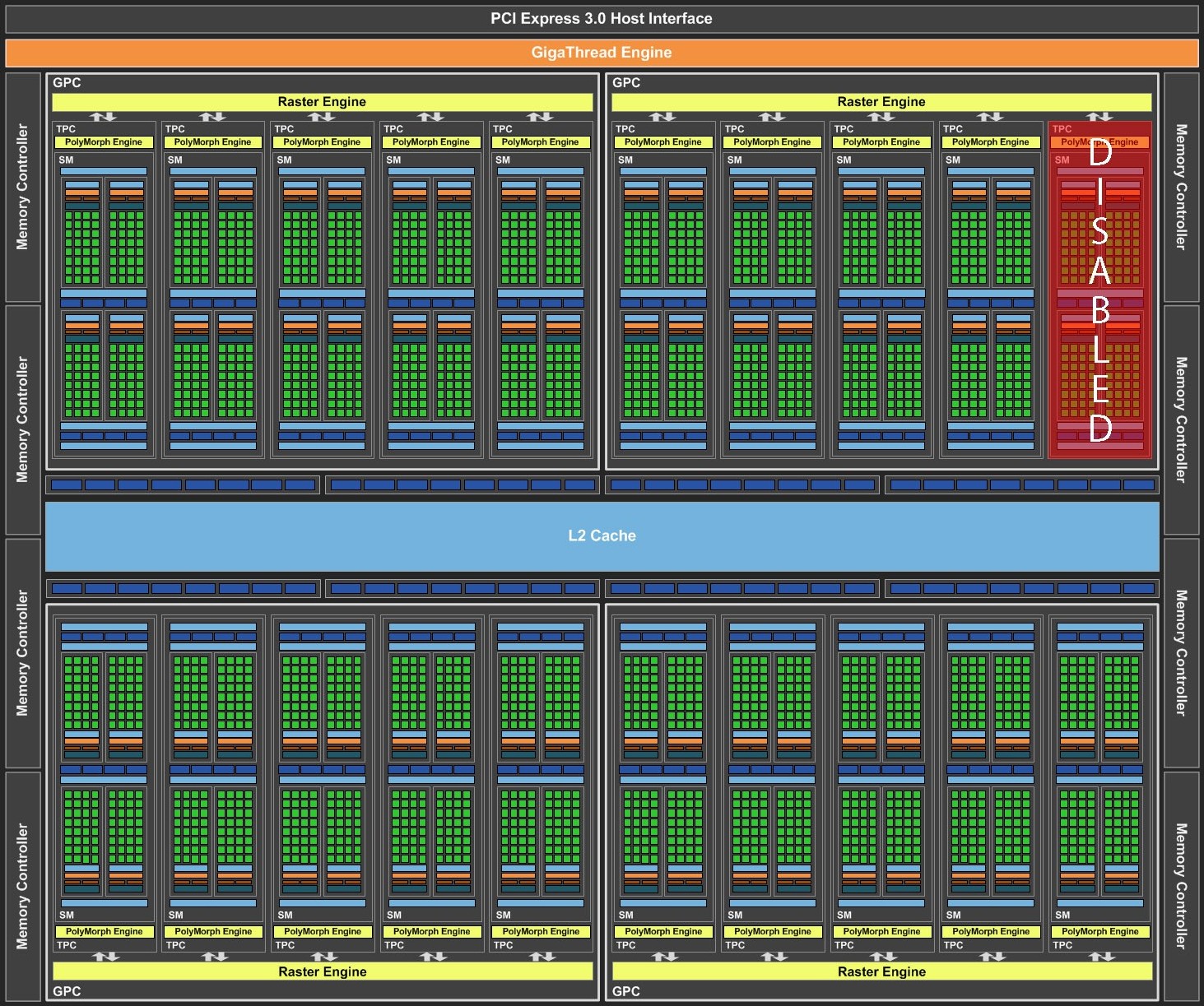Anyone who thinks that Nvidia has already brought all feasible GPUs based on the Pascal architecture is of course hugely mistaken. Despite a fairly extensive selection of GeForce GTX 10 cards, the company is again not ready to have AMD at least once the last word in the upper middle class or. to the upper class.
The Radeon RX Vega64 is currently quite loose with the GeForce GTX 1080 Ti, only with the RX Vega56 things looked a little different, because the GeForce GTX 1070 is quite visibly weakening in some respects. So you just shake a card out of your sleeve, which is supposed to solve exactly this problem, even though it does not actually have any greater raison d'etre in the Nvidia microcosm of the nomenclatures. The only task and real challenge is to counter the RX Vega56 so creatively that you don't get dangerous to your cards.
We will report in more detail tomorrow about the whole dance with different BIOS versions and frantic downgrades to avoid any attempts to approach and cannibalize the GeForce GTX 1080. Today's focus is solely on the map, because it's launch day again. The anecdotes and background information about the Making-Of can also wait another day (attention, teaser!).
To realize the GeForce GTX 1070 Ti, Nvidia uses a lot of DNA from the GTX 1080, including the well-known vapor-chamber cooling and a 5+1 phased power supply. Although the GP104 processor of the 1070 Ti has disabled one of its SMs, the performance of the remaining 19 is so good that Nvidia forces the board partners to keep their base and boost clocks at Nvidia's strict specifications. Otherwise, in the end, still factory-overclocked models would be able to beat the whole GeForce GTX 1080 of the entry-level class, which was not or only slightly overclocked.
The 469 Euro RRP is just below the entry price for the currently cheapest GeForce GTX 1080, which seems quite absurd and could of course put considerable pressure on all cards. However, since the GeForce GTX 1080 can hardly be made much more expensive again (because the RX Vega64 is lurking somewhere), it will probably amount to a lowering of the prices for the GeForce GTX 1070 – if not the miners again cause an extreme shortage. We see, there is actually no real gap in the price structure, but the RX Vega56.
The GeForce GTX 1070 Ti
The GeForce GTX 1070 Ti is based on the same GP104 processor that we introduced in our Nvidia GeForce GTX 1080 Pascal Launch Review in May 2016. The 7.2 billion transistor chip is a product of TSMC-FinFET Plus production in 16nm format, so also a good old acquaintance.
The underlying GeForce GTX 1080 still uses the GP104 in its entirety and has 2560 CUDA cores in 20 streaming multiprocessors (SM). The GTX 1070 was realized at the time by simply cutting off five of these SMs and resulting in 1920 active CUDA cores. The current GeForce GTX 1070 Ti has 19 SMs, which is only one less than its big sister.
With 128 cores and eight texture units per SM, this ultimately enumerate 2432 CUDA cores and 152 texture units. Even then, the 1070 Ti looks more like a 1080 and not like the namesake 1070. So it's more of a GeForce GTX 1080 light than a thundered GeForce GTX 1070. In purely tabular terms, this looks like this in comparison:
| Gpu |
GeForce GTX 1080 (GP104) |
GeForce GTX 1070 Ti (GP104) | GeForce GTX 1070 (GP104) |
|---|---|---|---|
| Sms |
20 | 19 | 15 |
| CUDA Cores |
2560 | 2432 | 1920 |
| Base Clock |
1607 MHz |
1607 MHz |
1506 MHz |
| GPU Boost Clock |
1733 MHz | 1683 MHz |
1683 MHz |
| GFLOPs (Base Clock) |
8228 | 7816 | 5783 |
| Texture Units |
160 | 152 | 120 |
| Texel Fill Rate |
277.3 GT/s | 244.3 GT/s | 201.9 GT/s |
| Memory Data Rate |
10 Gb/s | 8 Gb/s |
8 Gb/s |
| Memory Bandwidth |
320 GB/s | 256 GB/s |
256 GB/s |
| Rops |
64 | 64 | 64 |
| L2 Cache |
2MB | 2MB | 2MB |
| Tdp |
180w |
180w |
150w |
| Transistor |
7.2 billion | 7.2 billion | 7.2 billion |
| The Size |
314 mm2 | 314 mm2 | 314 mm2 |
| Process Node |
16nm | 16nm | 16nm |
After many experiments (we will report on this), the GeForce now comes with a base clock of 1607 MHz, analogous to the GeForce GTX 1080. However, the offset for the boost clock is not so aggressive, so that in the end the 1683 MHz must be sufficient, which is also granted to the GeForce GTX 1070. There is also a power target of 180 watts, which the board partners can have raised up to 133% (239 watts) if the customer wants to manually overclock.
Some companies have taken an elegant bow to Nvidia's ban on factory overclocking, offering a simple "one-click switch" in their own tools. Of course, such a software solution cannot replace the real factory overclocking via the firmware 100%, but it goes that way. The fact that all manufacturers expect the customer's pleasure can also be seen in the cooling solutions used, which almost all manufacturers have simply removed from the GTX-1080 shelf.
But how do you get the construct slowly enough not to make it a 1080 cannibal? The GP104 backend remains intact, including a 256-bit storage interface, 64 ROPs, and 2MB of shared L2 cache. However, while the GeForce GTX 1080 uses 8GB of 10Gbps GDDR5X storage and up to 320 Gbps of bandwidth, the 1070 Ti uses GDDR5 like GeForce GTX 1070 8 Gbps. Good news for Ethereum miners? Probably less, because the GeForce GTX 1070 Ti is more of an offer to the players due to its specifications.
- 1 - Übersicht und Testsystem
- 2 - Testsystem und -methodik
- 3 - Im Detail: Nvidia GeForce GTX 1070 Ti FE
- 4 - Im Detail: MSI GeForce GTX 1070 Ti Titanium
- 5 - Ashes of the Singularity: Escalation (DirectX 12)
- 6 - Battlefield 1 (DirectX 12)
- 7 - Destiny 2 (DirectX 11)
- 8 - Doom (Vulkan)
- 9 - Metro: Last Light Redux (DirectX 11)
- 10 - Middle-earth: Shadow of War (DirectX 11)
- 11 - Rise of the Tomb Raider (DirectX 12)
- 12 - Tom Clancy’s Ghost Recon Wildlands (DirectX 11)
- 13 - Tom Clancy’s The Division (DirectX 12)
- 14 - Warhammer 40,000: Dawn of War III (DirectX 11)
- 15 - The Witcher 3 (DirectX 11)
- 16 - Leistungsaufnahme im Detail
- 17 - Temperaturen und Takt
- 18 - Übertaktung
- 19 - Lüfterdrehzahlen und Geräuschentwicklung
- 20 - Zusammenfassung und Fazit



































Kommentieren